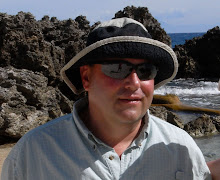I came across this interesting web site about Roatan and thought you might like to take a look. There are a lot of links and an orientation map of the island.
I also had a request for some information about NYS Standards and how they might be met by addressing Tropical Marine Ecology concepts in the classroom. The following Cores are for Grades K-4 and reflect the contents of the Tropical Marine Ecology Kit:
Tropical Marine Ecology The Major understandings from the NYS Elementary Science Core Curriculum Grades K-4, Physical Setting
(PS) and Living Environment (LE) which may be addressed with this curricular material.
PS 1.1a Natural cycles and patterns include:..rotation, revolution, length of daylight varies with seasons, weather changing day(PS) and Living Environment (LE) which may be addressed with this curricular material.
to day and through seasons, changing appearance of the Moon through its cycle.
PS 1.1b Humans organize time into units based on nataural motions of the Earth; second, minute, hour, week, month.
PS 2.1a Weather is the condition of the outside air at a particular moment.
PS 2.1b Weather can be described and measured by: temperature, wind speed and direction, form and amount of
precipitation, general sky conditions ( cloudy, sunny, partly cloudy).
PS 2.1c Water is recycled by natural processes on earth: evaporation, condensation, precipitation, runoff, groundwater...
PS 2.1e Extreme natural events...may have positive or negative impacts on living things.
PS 4.1a Energy exists in various forms: heat, electric, sound, chemical, mechanical, light.
LE 1.1a Animals need air, water, and food in order to live and thrive.
LE 1.1b Plants require air, water, nutrients, and light in order to live and thrive.
LE 1.2a Living things grow, take in nutrients, breathe, reproduce, eliminate waste, and die.
LE 2.1a Some traits of living things have been inherited (e.g., color of flowers and number of limbs of animals).
LE 2.1b Some characteristics result from an individual’s interaction with the environment and cannot be inherited by the next
generation.....
LE 2.2a Plants and animals closely resemble their parents and other individuals in their species.
LE 2.2b Plants and animals can tansfer specific traits to their offspring when they reproduce.
LE 3.1a Each animal has different structures that serve different functions in growth, survival, and reproduction....
LE 3.1b Each plant has different structures that serve different functions in growth, survival, and reproduction.....
LE 3.1c In order to survive in their environment, plants and animals must be adapted to that environment.....
LE 3.2a Individuals within a species may compete with each other for food, mates, space, water, and shelter in their
environment.
LE 3.2b All individuals have variations, and because of these variations individuals of a species may have an advantage in
surviving and reproducing.
LE 4.1a Plants and animals have life cycles. These may include beginning of a life, development into an adult,
reproduction....and.....death.
LE 4.1b Each kind of plant goes through its own stages of growth and development that may include seed, young plant,
mature plant.
LE 4.1c The length of time from beginning of development to death of the plant is called its life span.
LE 4.1d Life cycles of some plants include changes from seed to mature plant.
LE 4.1e Each generation of animals goes through changes in form from young to adult. This completed sequence of
change....is called a life cycle.....
LE 4.1f Each kind of animal goes through its own stages of growth and development during its life span.
LE 4.1g The length of time from an animal’s birth to its death is called its life span. Life spans of different animals vary.
LE 4.2a Growth is the process by which plants and animals increase in size.
LE 4.2b Food supplies the energy and materials necessary for growth and repair.
LE 5.1a All living things grow, take in nutrients, breathe, reproduce, and eliminate waste.
LE 5.1b An organism’s external physical features can enable it to carry out life functions in its particular environment.
LE 5.2a Plants respond to changes in their environment.....
LE 5.2b Animals respond to change in their environment......
LE 5.2c Senses can provide essential information....to animals about their environment.
LE 5.2d Some animals, including humans, move from place to place to meet their needs.
LE 5.2e Particular animal characteristics are influenced by changing environmental conditions including.....
LE 5.2f Some animal behaviors are influenced by environmental conditions.......
LE 5.2g The health, growth, and development of organisms are affected by environmental conditions such as.....
LE 6.1a Green plants are producers because they provide the basic food supply for themselves and animals.
LE 6.1b All animals depend on plants. Some animals (predators) eat other animals ( prey).
LE 6.1c Animals that eat plants for food may in turn become food for other animals. This sequence is called a food chain.
LE 6.1d Decomposers are living things that play a vital role in recyclilng nutrients.
LE 6.1e An organism’s pattern of behavior is related to the nature of that organism’s environment.....
LE 6.1f When the environment changes, some plants and animals survive and reproduce, and others die or move to new
locations.
LE 6.2a Plants manufacture food by utilizing air, water, and energy from the Sun.
LE 6.2b The Sun’s energy is transferred on Earth from plants to animals through the food chain.
LE 6.2c Heat energy from the Sun powers the water cycle (see Physical Science Key Idea 2).
LE 7.1a Humans depend on their natural and constructed environments.
LE 7.1b Over time humans have changed their enviornment by cultivating c rops and raising animals, creating shelter.....
LE 7.1c Humans, as individuals or communities, change environments in ways that can be either helpful or harmful......

